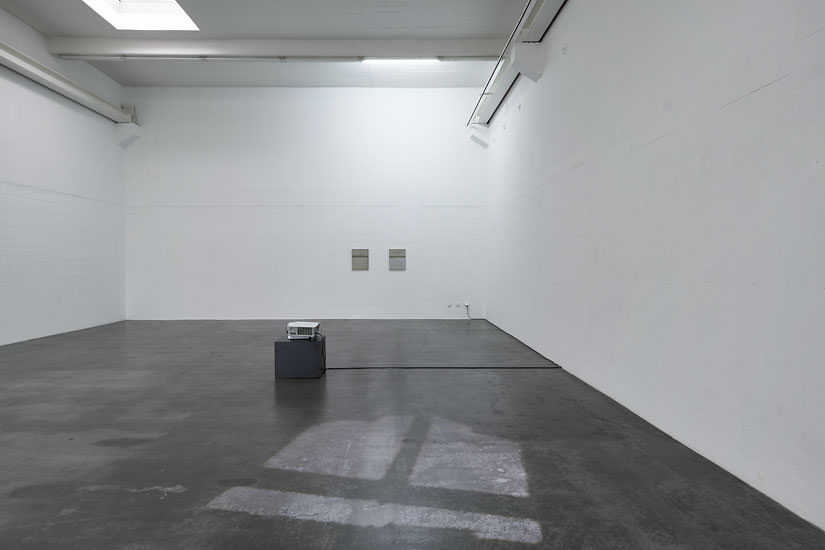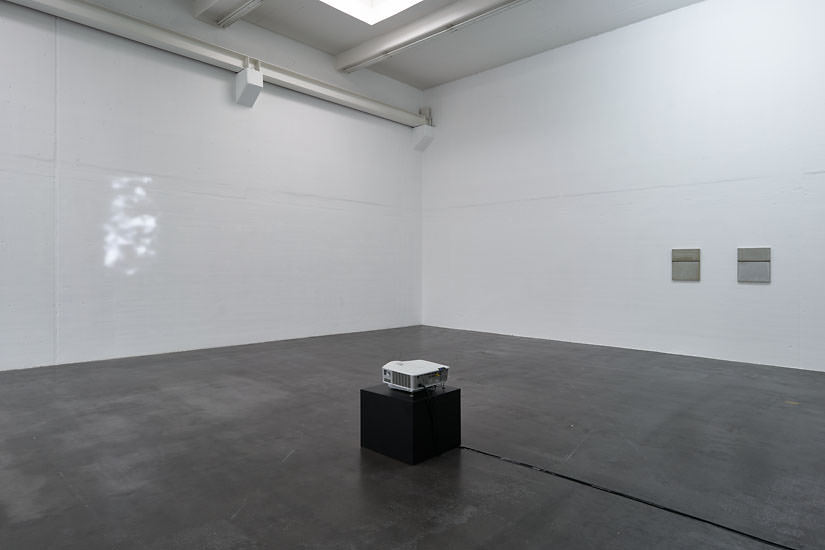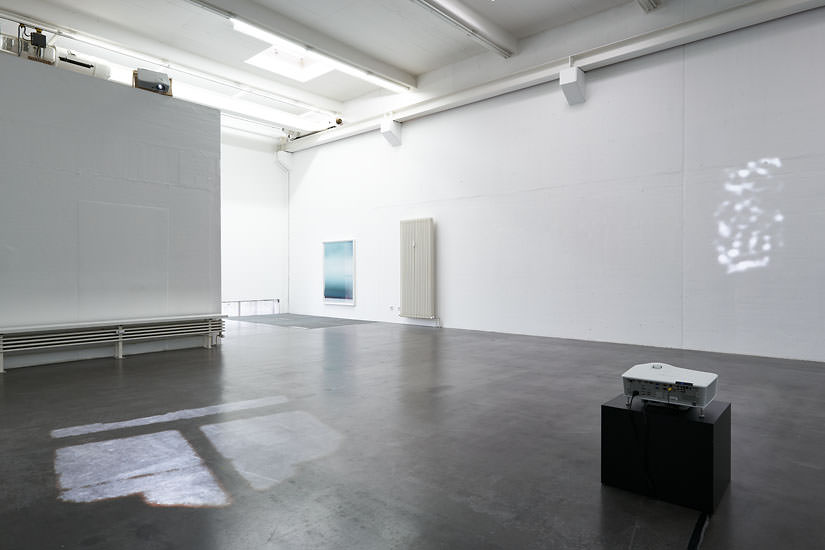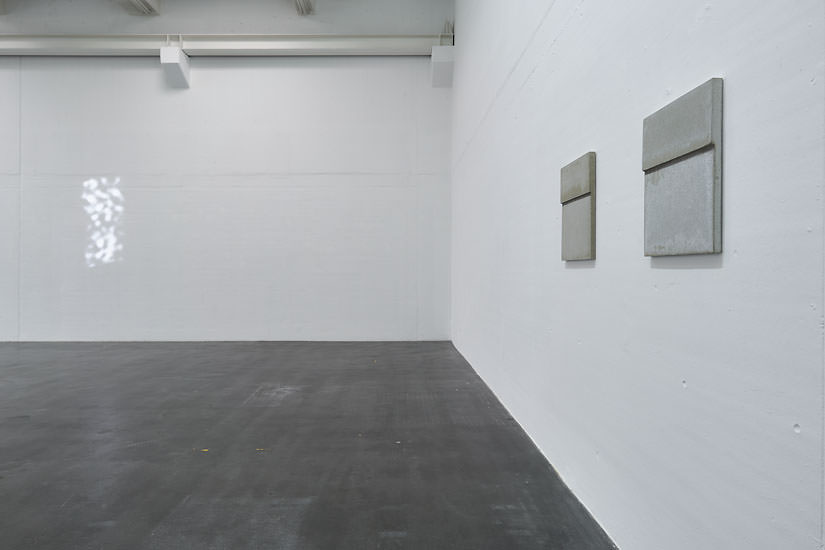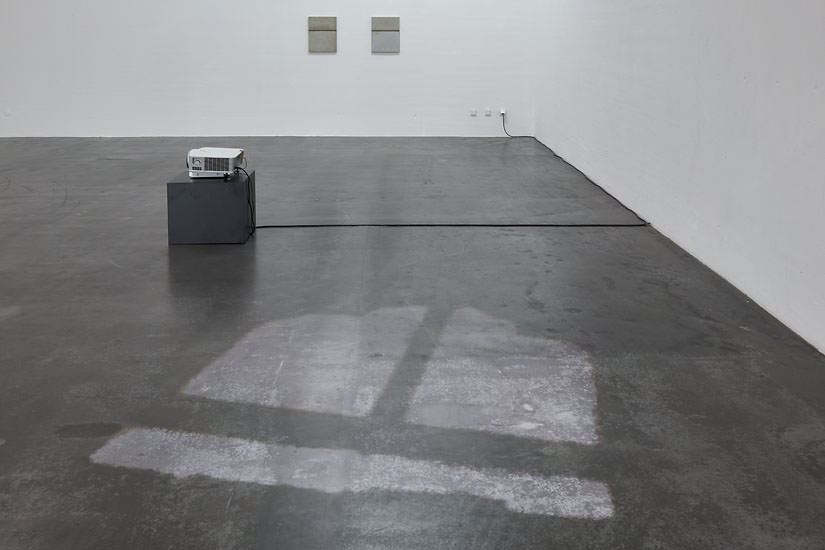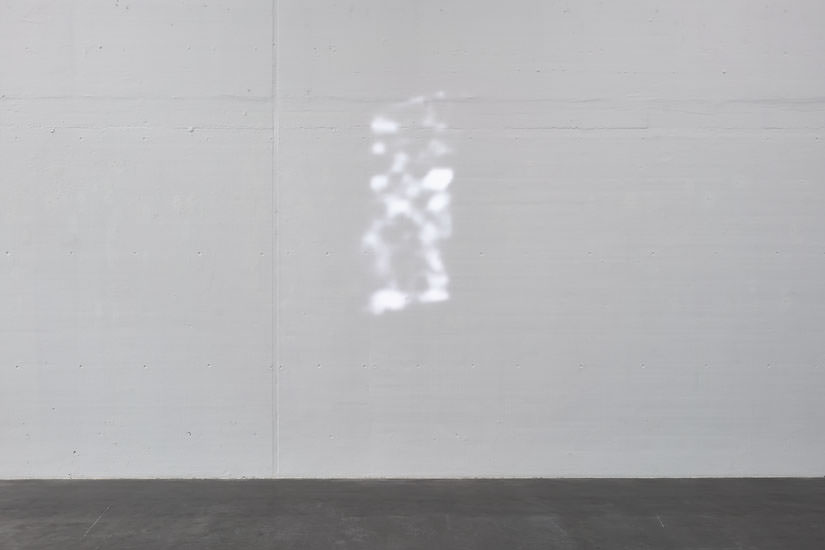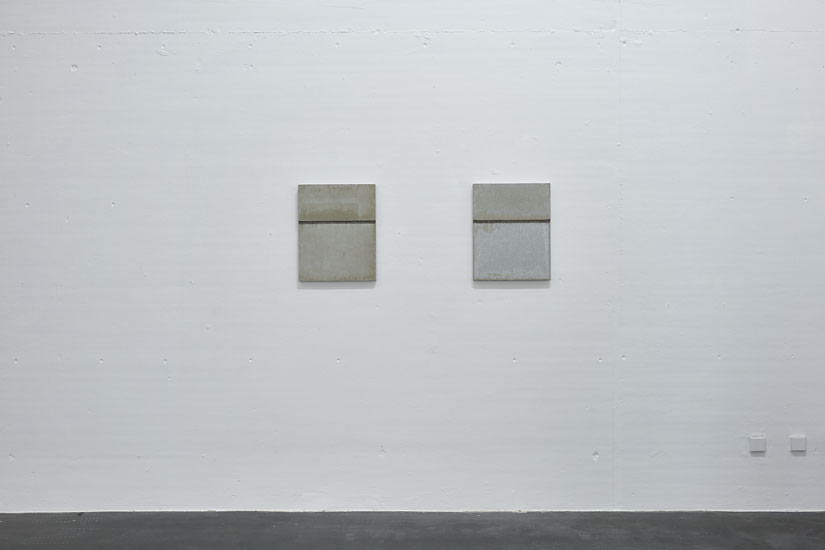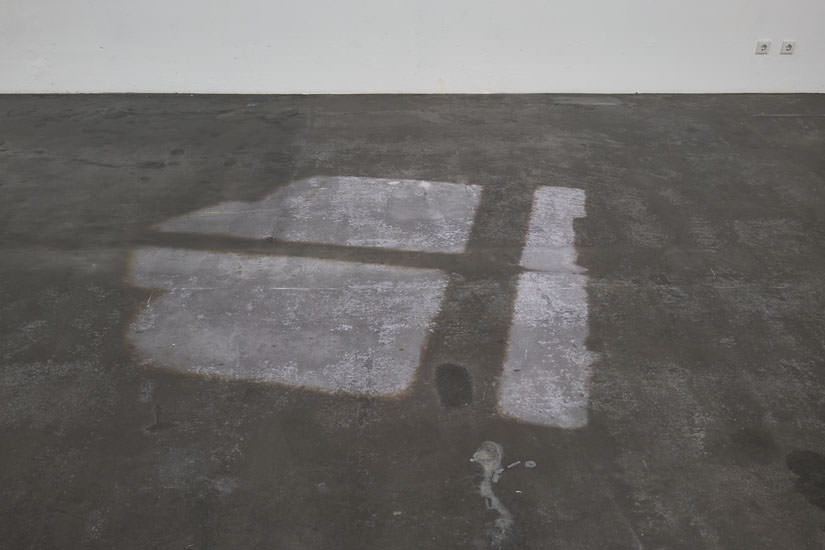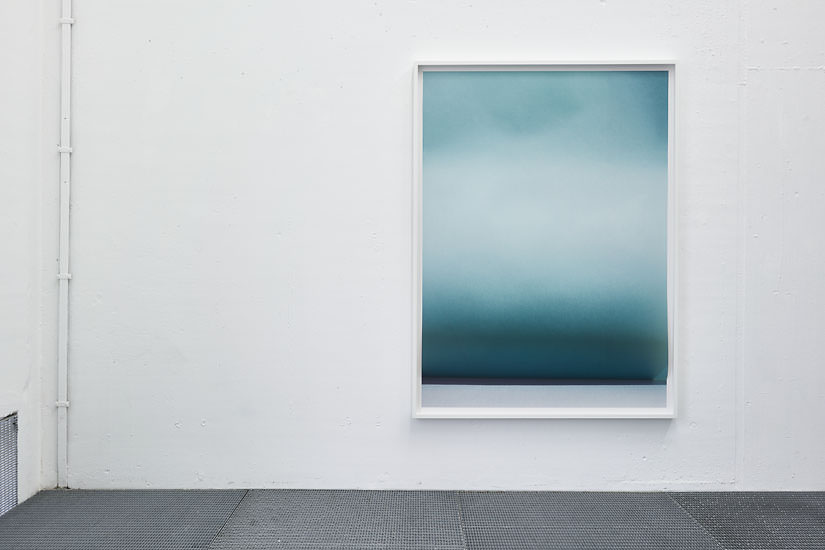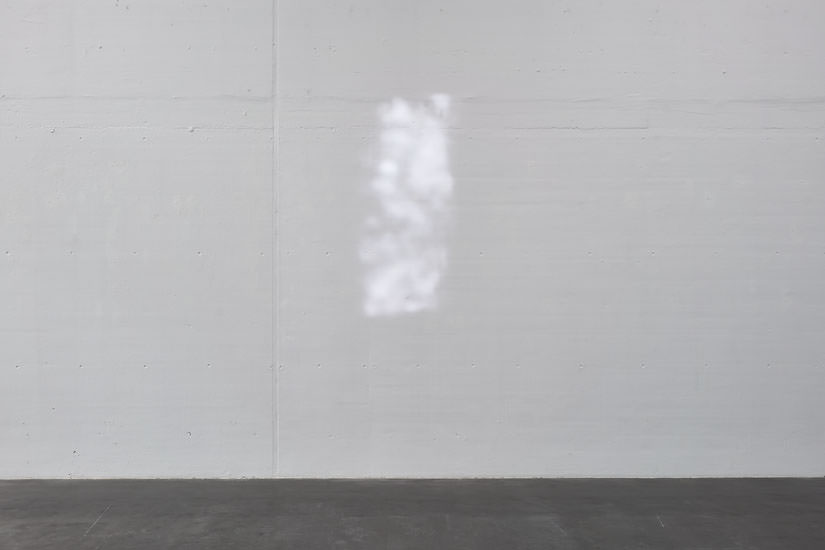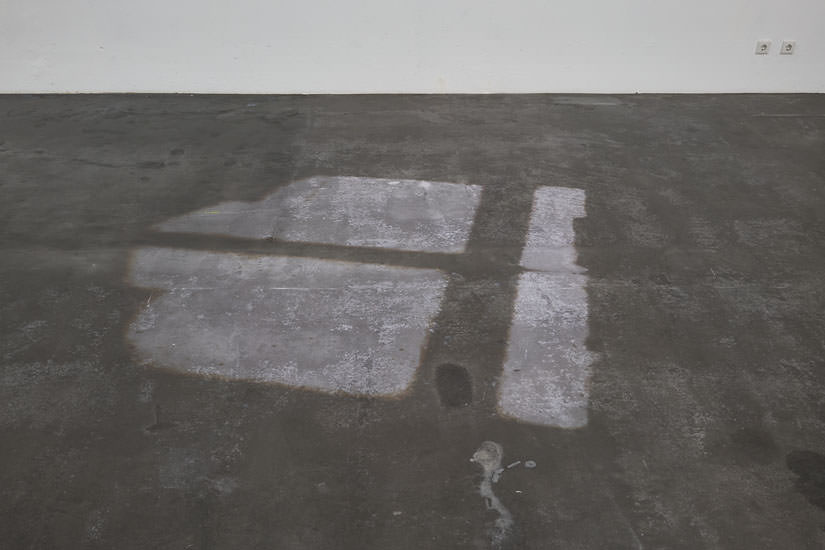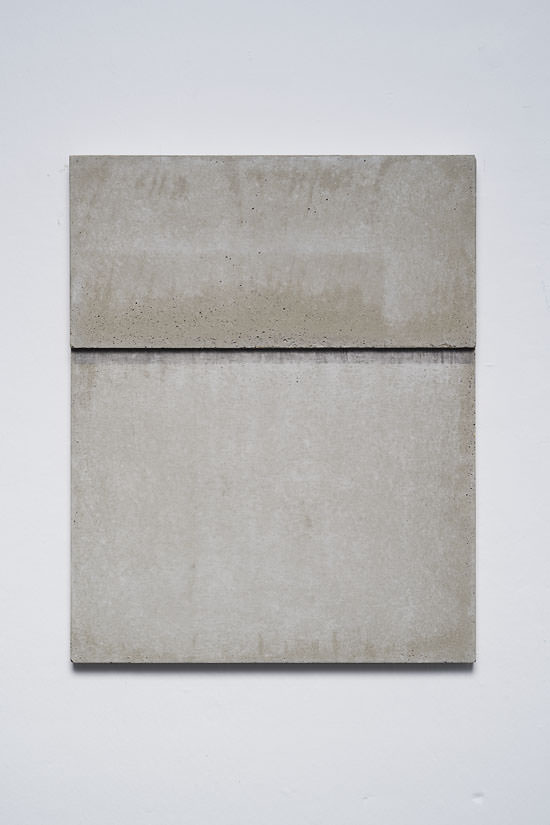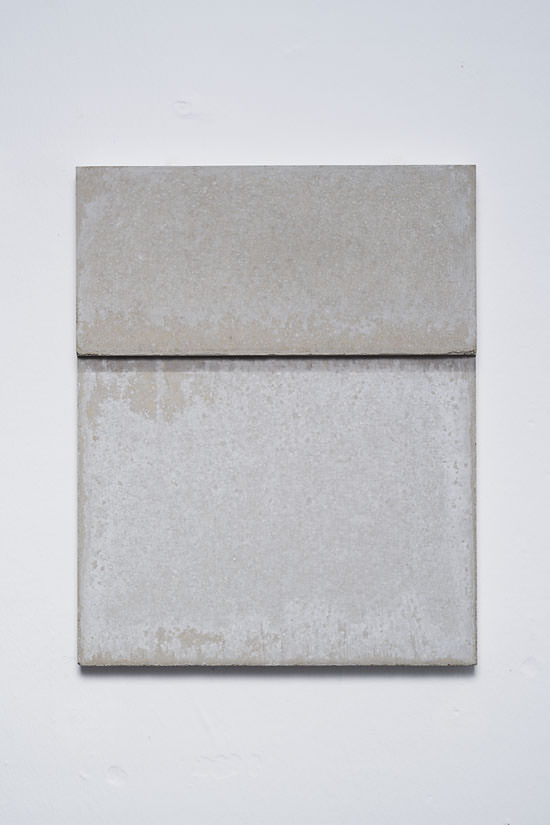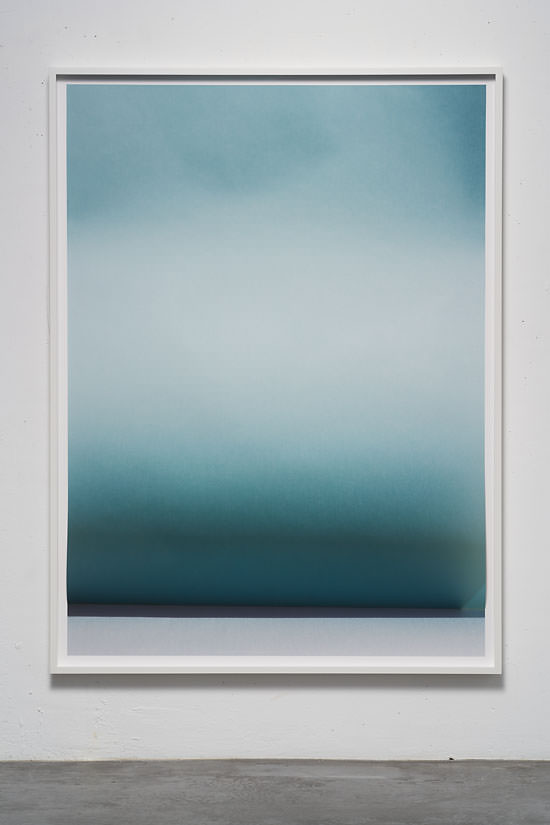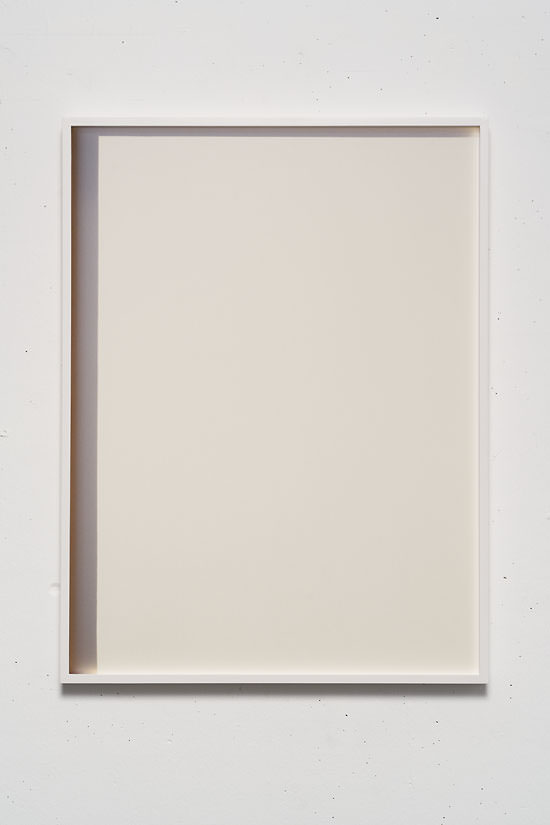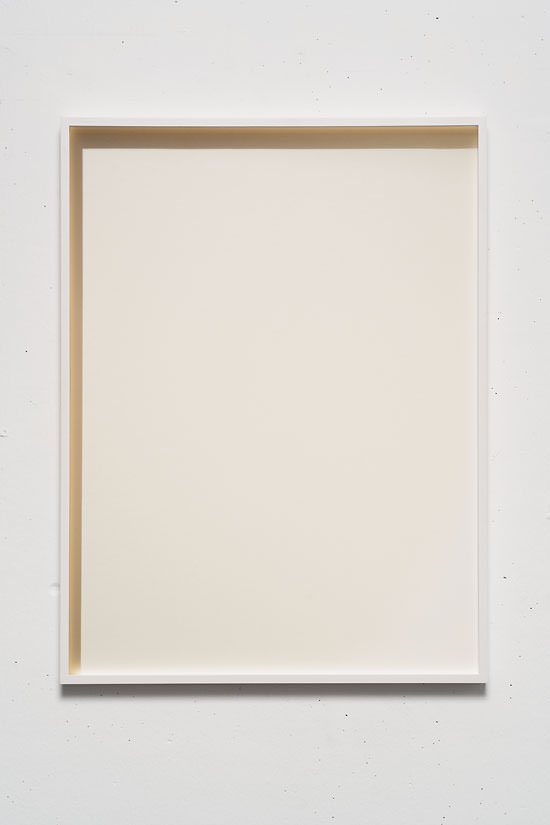JOHANNA VON MONKIEWITSCH
„Pass On“
Nov 10 – Dec 16, 2017
For exhibition text in English and German scroll downwards!
Installation Views:
Works:
Johanna von Monkiewitsch: videoinstallation 1:
„04.05.2016 / 15:13 – 15:28 / Palazzo Fortuny, Venice“
15 min, / loop
dimensions: variable, edition of 5
2016
2) Johanna von Monkiewitsch: videoinstallation 2:
„07.06.2016 / 12:16 – 12:25 / Sottoportego de la Furatola, Venice“
9.10 min, / loop
dimensions: variable, edition of 5
2016
3) Johanna von Monkiewitsch: „21.7.2017 / 11:41“,
Concrete, Pigments
50 x 40 x 3 cm
2017
4) Johanna von Monkiewitsch: „22.7.2017 / 10:15“,
Concrete, Pigments
50 x 40 x 3 cm
2017
5) Johanna von Monkiewitsch: „17.4.2015 / 14:47″
Pigment Printing on Hahnemühle, framed
164 x 121 cm (paper without frame), unique work + 1 AP
2017
6) Johanna von Monkiewitsch: „Cologne“
Pigment Print on fine art paper, framed
82 x 62 cm (incl. frame), edition of 3 + AP
2017
7) Johanna von Monkiewitsch: „Tel Aviv“
Pigment Print on fine art paper, framed
82 x 62 cm (incl. frame), edition of 3 + AP
2017
Ausstellungstext: (English Version scroll downwards)
Von Prof. Dr. Stephan Berg, Intendant Kunstmuseum Bonn
Auszug aus dem Katalog „Ebenbild/Abbild“
Katalog zur Ausstellung im Museo Ca´Rezzonico, Venedig
Juni – Oktober 2017
… Johanna von Monkiewitsch ist in einem elementaren Sinn eine Lichtbildnerin. Indem sie Licht mit der Hilfe von Medien zur Erscheinung bringt, die wiederum Licht benötigen, um Bilder zu produzieren, betreibt sie zum einen mediale Selbstreflexion, und arbeitet andererseits auf sehr präzise Weise an der ewigen Dichotomie zwischen Bild und Wirklichkeit. In ihren Papierfaltungen (seit 2007) dokumentiert die Künstlerin eindrucksvoll, wie diese Grundlagenforschung zu einem visuell hochattraktiven, philosophisch aufgeladenen Bilderrätsel werden kann. Den Ausgangspunkt bilden dabei Papiere im DIN-Format, welche die Künstlerin mehrfach faltet und wieder entfaltet. Die von Falzlinien durchzogenen Papiere werden anschließend in unterschiedlichen Lichtsituationen fotografiert, sodass ihre Haptik, ihre Materialbeschaffenheit und ihre Plastizität, aber auch die ganz bestimmte Lichtstimmung festgehalten werden (Monkiewitsch). Aus diesen Digitalfotos entstehen – zum Teil erheblich vergrößerte Pigmentdrucke, die ihrerseits genau an den Stellen gefaltet werden, an denen die ursprünglichen Faltungen vorgenommen wurden, sodass die Binnenschattierungen der neuen Faltungen sich mit den Schattenwürfen des zugrundeliegenden Originals doppeln. Diese Verknüpfung schafft eine paradoxe Situation, weil der reale Schatten hier den reproduzierten Schatten nachahmt, und damit das Verhältnis von Bild und Wirklichkeit umkehrt. Vergleichbar mit Oscar Wildes Bildnis des Dorian Gray folgt auch bei Johanna von Monkiewitsch das Bild nicht sklavisch und rein reproduktiv der Vorgabe der Wirklichkeit, sondern die Wirklichkeit des Pigmentdrucks folgt den Vorgaben des Bildes und seiner geisterhaft reproduzierten Schattenlinien. Innerhalb dieses Verfahrens ist die Fotografie das Transportmedium für eine Form der Lichtbildung, bei der das Bild zu seinem eigenen Gegenstand wird, und dieser Gegenstand wiederum fassbar ist als das Bild, das von ihm entsteht. Diese Form des Lichttransfers verwandelt einerseits das abgebildete Licht in seinen eigenen Gegenstand, und dokumentiert andererseits auch einen Akt der Translozierung, der es beinahe geisterhaft wirken lässt.
Diese Doppelstrategie spielt auch für die beiden Videoprojektionen eine wesentliche Rolle, welche die Künstlerin für Ihren Beitrag in Ca‘ Rezzonico entwickelt hat. Die beiden Filme zeigen zum einen direktes
Sonnenlicht aus dem Palazzo Fortuny, das innerhalb von 20 Minuten – für das flüchtige Auge fast unmerklich – durch den Raum wandert, zum anderen vom Lagunenwasser reflektiertes Sonnenlicht aus dem Dogenpalast, das dort seit Jahrhunderten als Lichterscheinung an der Decke zu sehen ist. Die jeweils sichtbar installierten Beamer sorgen mit ihrem elektrischen Licht für die Manifestation eines Natur-Lichts, das möglicherweise gerade, während man es betrachtet, an anderer Stelle in Venedig ebenfalls zu sehen wäre, und dabei doch einen ganz anderen Status aufweist. Während das Sonnenlicht und seine Spiegelung im Palazzo Fortuny und dem Dogenpalast an diese Orte gebunden sind und in ihnen auch die Einheit von Zeit und Raum dokumentieren, hat sich das transportierte Licht in Ca‘ Rezzonico von diesem Kontext befreit und formuliert seine eigene, völlig autonome, in einem Loop gebündelte Licht-Zeit. Wiewohl streng dokumentarisch sind diese Projektionen in ihrem Wesen absolut abstrakt und zeigen insofern auch, dass es ihnen nicht um Abbildung sondern um Erscheinung geht…
(Prof. Dr. Stephan Berg, Intendant Kunstmuseum Bonn, September 2017)
Exhibition Text
Prof. Dr. Stephan Berg, Director Kunstmuseum Bonn
part of the catalogue „Ebenbild/Abbild“,
catalogue from the exhibition at Museo Ca´Rezzonico, Venice
June – October 2017
Johanna von Monkiewitsch is a light artist in the most elementary sense. By revealing the very essence of light with the help of various media – media which are, in turn, dependent on light to produce images – she, on the one hand, propagates a medial self-reflection and, on the other hand, conducts a highly precise investigation into the eternal dichotomy between image and reality. With her folded paper works (since 2007), the artist creates impressive documents of how this fundamental research can be transformed into a visually highly attractive and philosophically laden picture puzzle. The starting point is a sheet of paper in a standardised format, which the artist folds in several places, only to unfold it again. The sheet of paper with fold lines is then photographed in various light situations so that ‘its haptics manifest not only its material characteristics and three-dimensionality, but also highly specific lighting effects’ (von Monkiewitsch).
These digital photos are then reproduced, often as significantly enlarged pigment prints which, in turn, are folded along exactly the same lines as the original folds, so that the real shadows of the new folds duplicate the shadows of the original folds. This concatenation leads to a paradox situation, since, here, the real shadows imitate the reproduced shadows and thus invert the relationship between image and reality.
Like Oscar Wilde’s Picture of Dorian Gray, Johanna von Monkiewitsch’s picture does not slavishly follow and thus merely reproduce the specifications of reality, but rather the reality of the pigment print follows the specifications of the image and its spectrally duplicated shadow lines. Within this process, photography is a transportation medium for a form of light art, in which the image becomes its own object, and this object becomes, in turn, tangible as an image born out of it. On the one hand, this form of light transfer transforms the reproduced light into its own object and, on the other hand, documents the act of transposition, which lends it an almost spectral manifestation.
This double strategy also plays an essential role in the two video projections, which the artist developed for her exhibition in the Museo Ca’ Rezzonico in Venice. The first film depicts the direct sunlight shining into the Palazzo Fortuny which wandered through the space – nearly imperceptible to the naked eye – during a time span of twenty minutes, while the second film depicts sunlight on the water of the laguna reflected, as it has been since many centuries, as a light apparition on the ceiling of the Doge’s Palace. With their electric light, the visibly installed beamers create a manifestation of a natural light situation which is theoretically also visible at precisely the same time in a different location, namely in Venice – while simultaneously referring to a completely different status. Whereas the sunlight and its reflection in the Palazzo Fortuny and the Doge’s Palace are inextricably tied to these spaces and document within these the unity of time and space, the transported light is liberated from this context and formulates its own, completely autonomous light-time, bundled in the form of a loop. Although on the one hand strictly documentary, these projections are, on the other hand, essentially absolutely abstract and thus demonstrate that they do not mere deal with the issue of reproduction, but rather with that of appearance.

